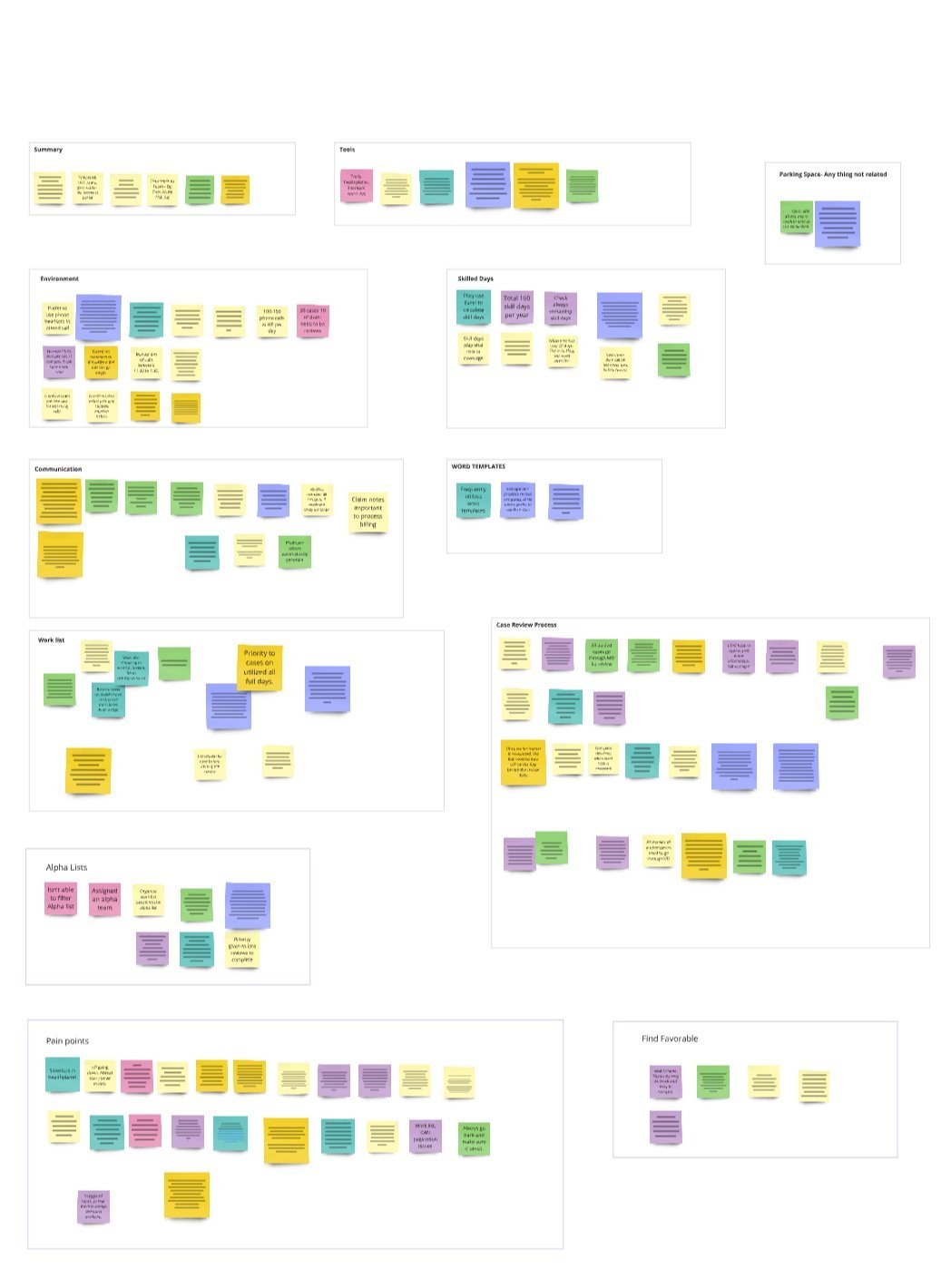
UPMC's insurance authorization process required analysis to identify workflow challenges and improve HealthPlanet application usability.
Utilization management (UM) within the UPMC Health Plan is done through an application called HealthPlanet. This process had not been documented in some time. Our goal was to understand how insurance authorization is handled within the UPMC health plan, while identifying navigation challenges, workflow inefficiencies, and pain points in the HealthPlanet application.
BACKGROUND
SCOPE
Participated in end-to-end research to deliver actionable insights and inform design decisions.
Designed and conducted Contextual Inquiries, participated in the analysis and synthesis of findings, developed artifacts and presented actionable recommendations to stakeholders and the design team.
RESEARCH QUESTIONS & GOAL
Exploring clinician workflows and challenges in HealthPlanet's utilization management to enhance user experience.
Questions
How do clinicians utilize HealthPlanet when completing insurance authorizations?
What challenges are encountered when trying to ensure efficient and appropriate healthcare resource utilization?
Goal
To gain a comprehensive understanding of the as-is workflow of those who work on utilization management cases, create workflows, and gather insights to improve the user experience.
RESEARCH PLAN
Conduct contextual inquiries with UM healthcare professionals to assess workflows and user experience.
Participants: Nurses, Medical Directors and other representatives with various levels of experience
Duration: 90 minutes
Environment: Virtual on Microsoft Teams
Type: Contextual Inquiry
Timeline: Nov 2023-Jan 2024
CONTEXTUAL INQUIRY
Observed real-world workflows to uncover friction points in the insurance authorization process.
We conducted 11 remote contextual inquiries with Utilization Management (UM) team members to deeply understand their day-to-day tasks and tools.
What We Did
Collaborated as a cross-functional team (UX, visual design, and research)
Recruited participants based on UM role and experience level
Facilitated screen-sharing sessions via Microsoft Teams
Observed participants as they completed real workflows in real systems
Asked clarifying questions during the session; saved deeper questions for the end
Captured notes on navigation, behaviors, and pain points
Followed strict HIPAA protocols — no recordings
ANALYSIS
From the observations, affinity maps were created to cluster patterns and themes.
SYNTHESIS
Deliverables: Role-Specific Journey Maps, Workflows, and Personas
Based on our analysis I created journey maps for each UM role while my teammates created workflow maps and personas for each.
JOURNEY MAPS
SERVICE DESIGN BLUEPRINTS
WORKFLOWS
PERSONAS
RECOMMENDATIONS
Recommendations focused on improving workflow efficiency, system usability, and automation in HealthPlanet.
Key pain points like navigation, responsiveness, and communication features.
🔧 Priority 1 Recommendations
Critical improvements to reduce friction and support daily work
🗂 Streamline Worklists: Fix issues in the CAN notes view for better readability and speed.
🗣 Voice-to-Text for CAN Notes: Integrate templates and voice entry for faster documentation.
📎 Attachment Alerts: Notify users when files are uploaded to UM cases.
⚙️ Smart Automation: Expand rules for claims, denials, and letter templates.
🐛 Bug Fixes: Resolve broken links and improve reliability.
🚀 Priority 2 Recommendations
System refinements that improve clarity, speed, and user confidence
🟢 Live Status Indicator: Keep users informed of downtime or maintenance.
🔄 Boost Responsiveness: Collaborate with performance team for system speedups.
🧩 Unified Case Sharing: Standardize templates across facilities.
🧭 Simplified Navigation: Make page transitions more seamless and intuitive.
IMPACT & REFLECTION
UM Screens are in need of further review and virtual contextual inquiries capture important insights.
Impact: Stakeholders discovered clinicians were not using Care Activity Note templates, prompting a review of their relevance and a broader evaluation of Utilization Management screens, beginning with Pharmacy, to streamline processes.
Reflection: Conducting virtual contextual inquiries proved challenging, but collaborative note-taking ensured key behaviors and observations were captured.









